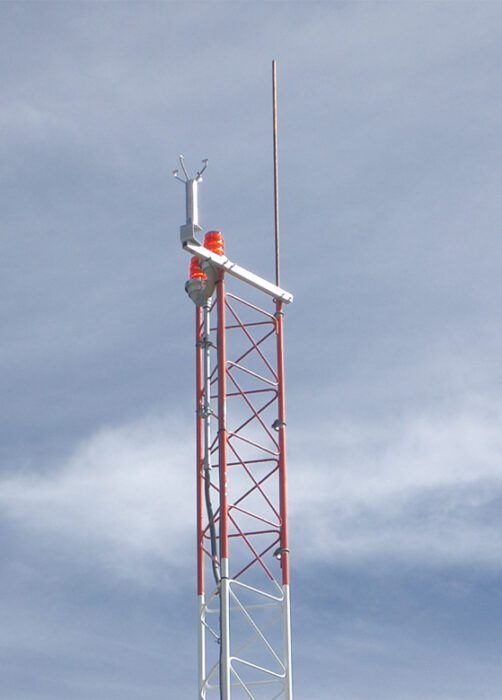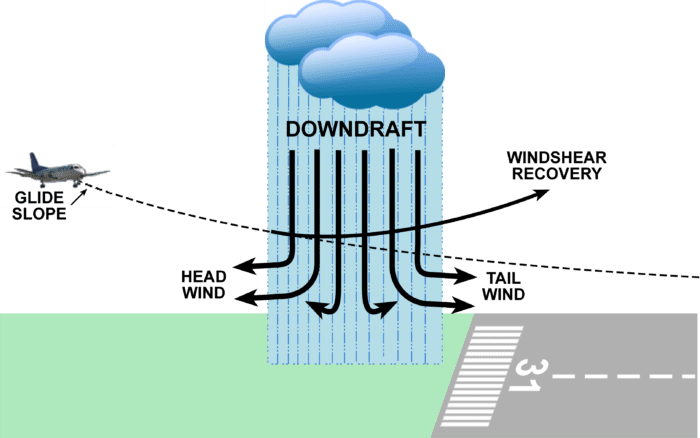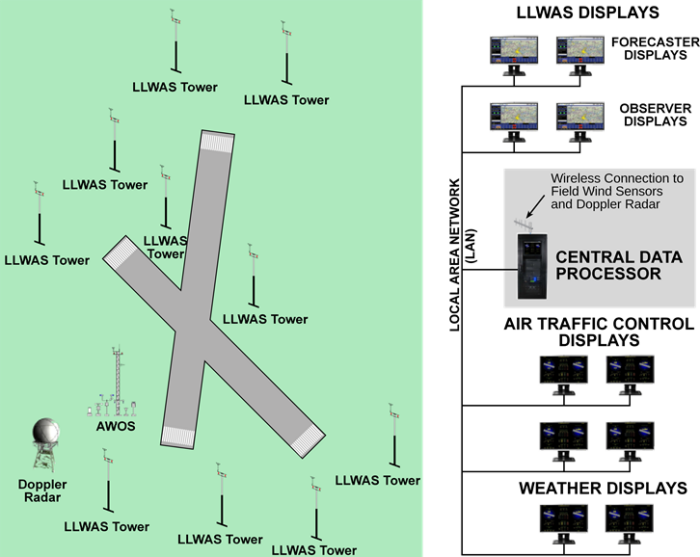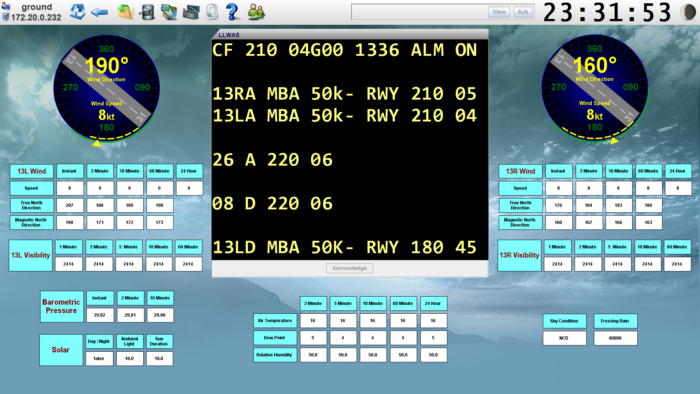AWI's Low Level Windshear Alert System (LLWAS)
Featuring the National Center for Atmospheric Research (NCAR) Phase 3 LLWAS Algorithm
AWI utilizes the field tested NCAR Ultrasonic_V2Phase 3 LLWAS algorithm in order to deliver the safest and most reliable LLWAS system on the market today. This system has been deployed at hundreds of airfields around the world. A properly developed, sited, and functioning LLWAS system protects life and property from extremely hazardous wind shear and microburst conditions. AWI's extensive experience in surface observation systems and sensor integration combined with our integrated display software, provides airports with an unsurpassed LLWAS system.
Detecting and Reporting Wind Shear and Microbursts
Operating aircraft during volatile wind shifts are critical environmental factors to successfully navigating a safe landing or take off. A strong headwind causes the pilot to push the aircraft nose down to effect the proper glide slope on final approach. When under wind shear or microburst conditions, in an instant that headwind can switch to an equally strong tail wind causing a dangerous loss of air speed. Having an early warning system that alerts the pilot of these dangerous conditions is essential for the safe operation of your airfield.


 MetObserver LLWAS is AWI's proven system for detecting and reporting wind shear and microburst conditions. The systems is comprised of 6 to 30+ ultrasonic winds sensors on towers ranging from 10m to 30m depending on the final siting as recommended by FAA Order 6560-21A. The critical wind information is gathered to a central processor where the proven NCAR Phase 3 algorithm processes the wind activities of the airfield. This facilitates the quantifying, mapping and alerting in both auditable and visual form of wind shear conditions in relation to the runway(s) and general airfield. The LLWAS data can then be disseminated to any number of local or remote displays for operational use.
MetObserver LLWAS is AWI's proven system for detecting and reporting wind shear and microburst conditions. The systems is comprised of 6 to 30+ ultrasonic winds sensors on towers ranging from 10m to 30m depending on the final siting as recommended by FAA Order 6560-21A. The critical wind information is gathered to a central processor where the proven NCAR Phase 3 algorithm processes the wind activities of the airfield. This facilitates the quantifying, mapping and alerting in both auditable and visual form of wind shear conditions in relation to the runway(s) and general airfield. The LLWAS data can then be disseminated to any number of local or remote displays for operational use.

 AWI's MetObserver LLWAS offers the most complete display solutions in the industry, allowing our customers to display the LLWAS data on any of three supported display platforms. AWI's FlexIDS is the ultimate in display integration, and LLWAS is fully supported in that environment. That means that all the power of fully customized displays, alerts, and interaction with other ATC systems is possible. If the customer would prefer, we also support the viewing of LLWAS data as a component of our MetObserver AWOS system. Finally, AWI will even support LLWAS data displayed on industry standard ribbon displays.
AWI's MetObserver LLWAS offers the most complete display solutions in the industry, allowing our customers to display the LLWAS data on any of three supported display platforms. AWI's FlexIDS is the ultimate in display integration, and LLWAS is fully supported in that environment. That means that all the power of fully customized displays, alerts, and interaction with other ATC systems is possible. If the customer would prefer, we also support the viewing of LLWAS data as a component of our MetObserver AWOS system. Finally, AWI will even support LLWAS data displayed on industry standard ribbon displays.